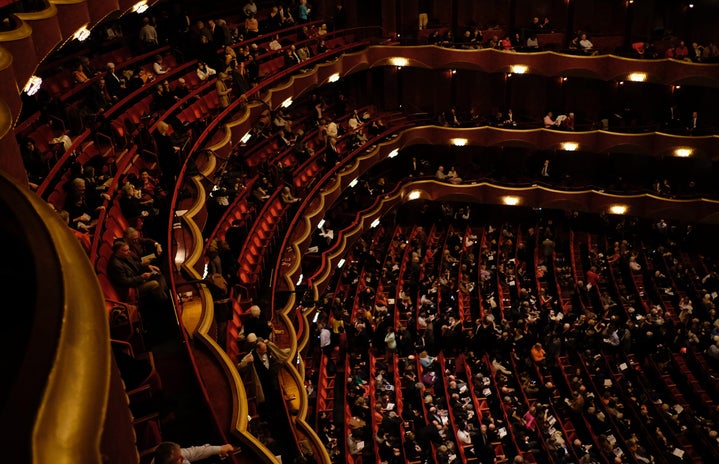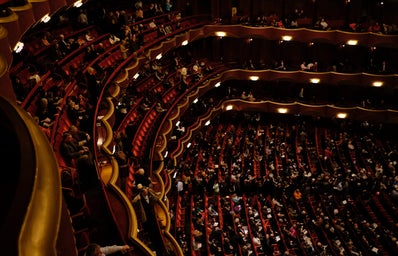Trigger Warning: This article deals with topics of sexual assault, rape and sexually transmitted diseases.
The first time I watched David Robert Mitchell’s It Follows was at the suggestion of my friend, a self-described “horror movie buff.” My friend sent me a lengthy text raving about how the movie was a masterpiece, one of the most terrifying movies in years, and a wonderful twist on a genre known for being formulaic and somewhat predictable.
The first time after watching it I thought it was good; it had a creepy concept, a lot of nods to classic horror and a delightfully terrified cast of characters. I had no idea at the time, however, that It Follows would eventually contribute to the decline of my relationship with my then-boyfriend, send me down a rabbit hole of film-oriented feminism, and create a divide within my friend group based around one simple question:“Was Jay raped?”
The film premiered at the Cannes Film Festival in 2014 and was wide released in theaters in 2015. The basic premise of It Followsis that a supernatural entity simply referred to as “It” passes from person to person through sex. The entity then stalks their target and either kills them or is transferred to a new target. If the person It is inhabiting dies, the entity returns to the person It was inside before them. In this way, It acts much like a chain letter, but instead of forwarding an email to someone, you just pass a demon to them via sexual intercourse.
This is where the main character, Jamie “Jay” Height (Maika Monroe) comes in. In the first act of It Follows, Jay is dating a boy named Hugh (Jake Weary). Eventually, their relationship becomes physical and after they seemingly have sexual intercourse Hugh knocks Jay unconscious with chloroform. It is at this point that the movie’s tone shifts dramatically and the audience is formally introduced to the entity that terrorizes Jay for the rest of the film. From here, the movie seems to subvert the old horror movie trope that sex equates death as the only way to survive is to pass It on to another person.
It was also at that point in the movie that something strange happened in my own life. I remarked to my then-boyfriend after the movie that I thought It Follows dealt with sexual assault in a delicate way which was something I wasn’t used to in film at the time, especially in movies directed by men. At the time I interpreted my boyfriend’s silence as post-movie hunger but as we ate pizza in the tiny restaurant near the theater,I had no idea what would come next.
A few months went by and the film came out on DVD, so I promptly bought the movie with the intention of showing my mom as we both are avid horror fans. Movie night at my house went normally that night; my boyfriend and I bought snacks and my mom made popcorn and we all sat down to watch It Follows. During the scene after Jay and Hugh have sex and the audience is introduced to It, my boyfriend turned to my mom and said “Lindsay thinks Jay was raped, can you believe that?” to which my mom replied that she too interpreted that scene the same way. My mom’s response, much like mine a few months before, was an offhand comment not intended to spark a debate or even be followed up with a reply.
Unfortunately, this was not the case. My boyfriend erupted into a strange anger, calling my mom and mine’s interpretation of the scene “overdramatic” and “unfounded in reality.” His episode eventually ended with him storming out of my house and sitting on my back patio for twenty minutes, after which he finally came back into my house after he “calmed down.”
My boyfriend and I eventually broke up, but his uncharacteristic outburst over my interpretation of a scene got me thinking; how did an interaction between two fictional characters in an intentionally vague movie illustrate some of the most insidious aspects of rape culture? I’ve now watched It Follows eleven times, sometimes by myself or with friends, and each time during the same scene I have to ask the question, “Do you think Jay was raped?” Most people I’ve asked are split; some say Hugh and Jay’s encounter was consensual and others say Hugh assaulted Jay, but are quick to differentiate between rape and assault.
I don’t have to say how ironic the conversation with my ex-boyfriend was, I often times felt uncomfortable but I never said anything often thinking my feelings were “over dramatic” and “unfounded in reality.” In a weird way, It Follows managed to capture the very essence of rape culture in my situation; the discomfort of women and the dismissal of that discomfort by men. A central theme after Jay’s assault is people constantly not believing her story even after she shows them concrete proof of her suffering. After It latches onto Jay, sex goes from being something fun and exciting to something perfunctory and dark.
It Follows is a memorable horror movie; it combines elements of classic horror set against the backdrop of modern-day anxieties. Its intentional dream-like quality makes for an uneasy tone that sets the viewer on edge and makes every little interaction seem insidious. But, what the movie does best, intentionally or not, is illustrate the quietest aspects of rape culture, the ones that are so ingrained into heterosexual interactions that most people are unaware of them.


